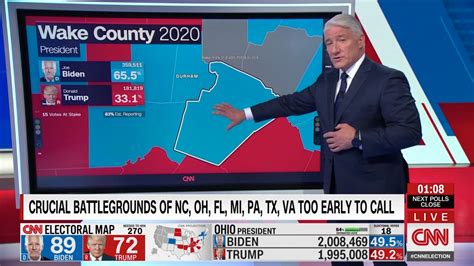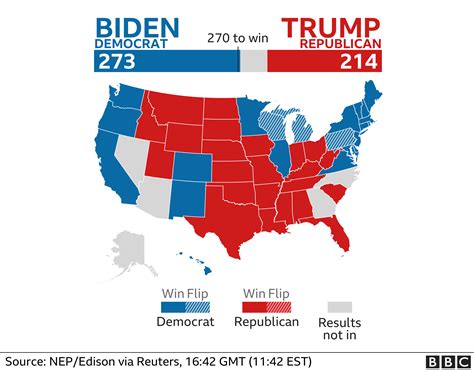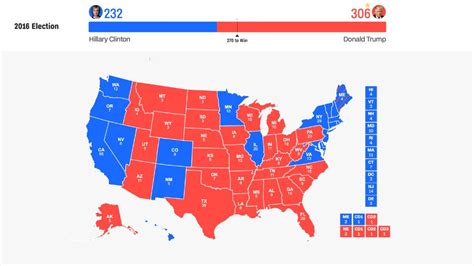Explore the key differences in election coverage, audience perceptions, and biases between CNN and Fox News. Analyze their impact on voter behavior and accuracy.In today’s rapidly evolving media landscape, the coverage of elections significantly influences public perception and voter behavior. This article delves into an in-depth analysis of CNN and Fox News, two of the most prominent news outlets in the United States, and their contrasting approaches to election reporting. By examining key differences in their coverage, the role of bias in shaping narratives, and audience reactions, we aim to uncover how these networks impact voter sentiment and decision-making. Additionally, we evaluate the accuracy of their reporting through rigorous fact-checking and explore CNN’s specific influence on voter behavior during crucial election periods. Whether you are a concerned citizen or a media-savvy individual, understanding these dynamics is essential to navigate the complex world of news today. Join us as we dissect the intricacies of election coverage by these two major players in the news arena.
Key Differences In Election Coverage Between CNN And Fox News
When analyzing CNN and Fox News, one of the most prominent aspects to consider is their differing approaches to election coverage. These differences stem from their distinct editorial policies, audience demographics, and overall mission as news organizations.
1. Tone and Presentation: CNN tends to adopt a more serious and formal tone, often focusing on in-depth analysis and extensive fact-checking. In contrast, Fox News frequently employs a more conversational style, often integrating opinion segments that are emotionally charged and aimed at rallying their audience.
2. Selection of Stories: The types of stories covered can vary widely. CNN often highlights issues such as electoral processes, voter turnout, and policy implications. On the other hand, Fox News may prioritize narratives that resonate with their viewer’s beliefs, often emphasizing stories that portray a government or establishment viewpoint in a critical light.
3. Guest Commentary: CNN tends to feature a diverse range of guests, including political analysts across the spectrum, which can lead to a more comprehensive dialogue on election issues. Fox News, however, regularly features conservative voices and pundits, providing a platform that aligns closely with its demographic.
4. Live Coverage Style: In election nights, CNN is known for its data-heavy, analytical approach, showcasing live election maps and statistical projections. Meanwhile, Fox News often focuses on breaking news and live reactions from key party figures, fostering a more dynamic and sometimes chaotic atmosphere during their coverage.
The key differences in election coverage between CNN and Fox News reveal their unique philosophies and the values they prioritize in broadcasting. Understanding these disparities is crucial for viewers seeking to navigate the complex landscape of political news.
The Role Of Bias In Analyzing CNN’s Reporting Style
When analyzing CNN, it’s essential to consider the implicit biases that can shape its reporting style. Bias in journalism refers to the tendency to present information in a way that favors one perspective over others. This bias can manifest in various forms, from the selection of stories to the language used in framing news segments.
One significant aspect of CNN’s coverage is its approach to storytelling. Critics often argue that CNN tends to emphasize narratives that align with a liberal viewpoint. This presents a challenge for viewers seeking objective information, as it can lead to selective reporting—highlighting certain facts while downplaying or omitting others that might contradict the favored narrative.
The choice of analysts and commentators featured on CNN can also influence perceptions of bias. Selection of guests who consistently lean towards a particular ideology may create echo chambers, where certain viewpoints are reiterated without significant challenge or counterbalance. This can skew the audience’s understanding of complex issues, particularly during election cycles when objectivity should be paramount.
Moreover, language plays a crucial role in conveying bias. The adjectives and terminology used in headlines or during reporting can evoke strong emotional responses and inadvertently shape public perception. For example, describing a political figure as controversial may carry different connotations than describing them as unorthodox. Such word choices can reinforce specific biases among the audience.
In analyzing CNN, it is vital to take into account these factors of bias that are interwoven into its reporting style. Understanding how bias operates can empower viewers to consume news more critically and make informed decisions based on a diverse range of viewpoints.
Audience Reactions: How CNN And Fox Shape Public Perception
In the landscape of American media, both CNN and Fox News play significant roles in shaping public perception, particularly during election cycles. The way these networks present their stories can profoundly influence audience reactions and interpretations of information. Analyzing CNN provides a framework to examine how their editorial choices impact viewers.
Different audiences gravitate toward CNN and Fox News for various reasons, often aligned with their political beliefs. CNN tends to attract a more liberal audience, which may expect critical analysis and diverse viewpoints within their reporting. In contrast, Fox News primarily serves a conservative viewership that often favors affirmations of their beliefs. This divergence in audience demographics is critical when evaluating how each network shapes public perceptions related to elections.
Moreover, the tone and language used by CNN and Fox News can elicit strong emotional responses from viewers. CNN’s approach often emphasizes reasoned discourse, which may invoke concern or introspection among its audience. Fox News, conversely, might utilize more assertive and engaging language that resonates emotionally with its viewers, fostering a sense of loyalty and urgency. Such differences can significantly influence how news regarding elections is interpreted and discussed.
Audience reactions are further augmented through social media platforms, where both networks have a robust presence. Clips and stories shared on platforms like Twitter and Facebook can amplify the narratives presented by CNN and Fox, resulting in a form of feedback loop where public perception is continuously shaped and reshaped. Thus, the impact of both networks extends beyond their immediate viewership and permeates broader societal conversations.
Understanding how CNN and Fox News influence public perception requires an analysis of their content delivery and audience interactions. Through a careful examination of viewer responses and the methods employed in reporting, we can gain insight into the landscape of American political discourse during critical election periods.
Fact-Checking: Evaluating Accuracy In CNN And Fox News Reports
In the realm of political reporting, accuracy is paramount. When analyzing CNN and Fox News, it becomes essential to scrutinize how each outlet verifies the information before it reaches the audience. Both networks have distinct fact-checking methodologies that impact the reliability of their coverage.
Fact-checking involves more than just verifying facts; it includes the evaluation of sources, context, and the narratives surrounding specific events. Understanding the differences in their approaches helps viewers discern the reliability of the information presented.
| Criteria | CNN | Fox News |
|---|---|---|
| Source Verification | Employs rigorous standards, often consulting multiple sources. | Relies on a mix of sources, sometimes favoring opinions that align with its perspective. |
| Fact-Checking Resources | Utilizes in-house teams and external fact-checking organizations. | Has a dedicated fact-checking team, but may prioritize editorial slants. |
| Reporting Transparency | Typically discloses sources and methodologies clearly in reports. | May use anonymous sources, leading to less transparency. |
Furthermore, both networks face challenges concerning misinformation, particularly in an age where social media amplifies rapid reporting. Their strategies for combating false narratives differ and can significantly impact audience trust.
When analyzing CNN and Fox News in terms of fact-checking, it’s crucial for viewers to remain critical consumers of the news, assessing information through the lens of reliability and bias, which can influence the political landscape during elections.
Analyzing CNN’s Influence On Voter Behavior During Elections
In the realm of journalism, particularly during election cycles, the impact of news outlets like CNN on voter behavior cannot be overstated. Given the network’s extensive reach and significant viewer engagement, understanding its influence is critical for both political analysts and voters alike. This section delves into how analyzing CNN reveals its role in shaping electoral outcomes.
One of the primary ways CNN influences voter behavior is through its news framing. The network tends to highlight particular issues or narratives that resonate with its audience, often setting the agenda for public discourse. This practice can sway voter opinions by emphasizing certain political viewpoints while downplaying others, effectively guiding viewers toward preferred interpretations of events.
Moreover, CNN’s polling and exit surveys play a crucial role in shaping perceptions of electoral viability. By regularly updating viewers on the latest polling data, CNN can create a sense of momentum or urgency around specific candidates, which may encourage voters to align with perceived front-runners or shift their support based on forecasted outcomes.
Another significant aspect is the role of commentary segments. CNN’s pundits often provide analysis that is colored by the network’s editorial slant. This commentary can reinforce or challenge viewer biases, further influencing voter decisions leading up to the election day. In elections characterized by polarized opinions, such narratives can significantly impact voter turnout and candidate support.
Furthermore, CNN engages audiences through interactive platforms, including social media and online forums, where real-time discussions about candidates and issues occur. This engagement can create a feedback loop, pushing voters to reconsider their positions based on the prevailing sentiments highlighted during these discussions.
To understand the true nature of electoral influence, it is essential to consider how CNN shapes not just news coverage but the public’s understanding of that news. By analyzing CNN, we can remember that the media landscape plays a vital role in directing the democratic process and influencing the actions of voters on a larger scale.
Frequently Asked Questions
What are the main differences in election coverage between CNN and Fox News?
CNN tends to focus on in-depth analysis and fact-checking, while Fox News often emphasizes narratives that resonate with conservative viewers.
How do CNN and Fox News approach candidate coverage?
CNN typically aims for neutrality and balanced reporting, while Fox News is more likely to spotlight coverage that aligns with conservative values and viewpoints.
What impact does viewer demographics have on the coverage styles of CNN and Fox News?
Viewer demographics play a significant role; CNN generally attracts a more liberal audience, which influences its emphasis on certain issues, while Fox News caters to a predominantly conservative audience.
How do CNN and Fox News handle fact-checking during elections?
CNN has a more rigorous approach to fact-checking, often highlighting inaccuracies, while Fox News may be less critical of its favored candidates and often challenges the credibility of opposing sources.
In what ways do CNN and Fox News engage with social media during elections?
Both networks utilize social media to enhance engagement, but CNN focuses on disseminating fact-based content, while Fox News frequently leverages social media to promote opinion pieces and commentary that galvanizes its base.
What role do pundits play in the election coverage of both networks?
Pundits on CNN provide analysis aiming for a more diverse perspective, whereas Fox News pundits often express strong opinions that align with conservative ideologies.
How can viewers critically assess the election coverage from both CNN and Fox News?
Viewers can critically assess coverage by comparing reports from both networks, seeking independent fact-checking sources, and being aware of inherent biases that may color reporting.






